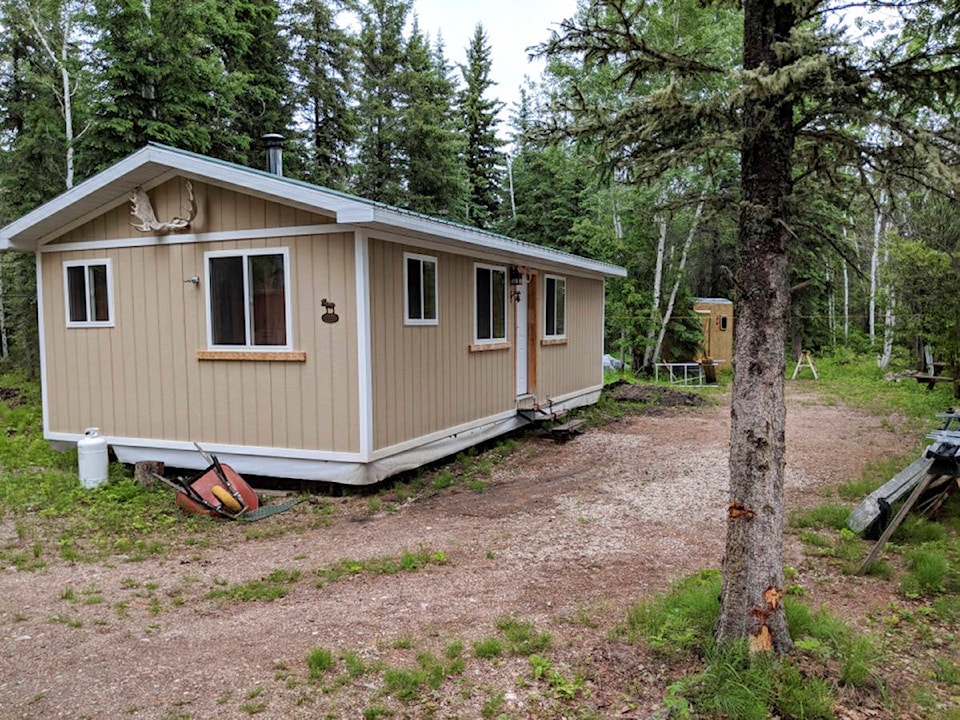When Ken Hudson hit a barrier while digging a sewage hole to drain his cabin sink, he assumed he had hit a rock.
What he found instead was a 14-inch rib, likely belonging to a buffalo or a moose.
Hudson, the former president of the Fort Smith Metis Council, has since learned the bone dates back 850 to 1,000 years SA����Ӱ�Ӵ�ý� though coming into that information has required patience.
Hudson first found the rib in June 2018 about 20 kilometres from Fort Smith, he said. He first gave it to a Fort Smith biologist, but took matters into his own hands when the biologist repeatedly griped at the cost of carbon-dating artifacts.
Cutting off an inch or so of the bone, Hudson carried the fossil with him to meetings in Ottawa and Vancouver. He learned uncovering more on the unearthed bone would cost $1,200 and returned to the NWT disapointed but not defeated.
A couple of months ago, Hudson said he connected with Tony Vermillion, South Slave regional superintendent for the department of Environment and Natural Resources (ENR). Vermillion had the bone sent to the Prince of Wales Northern Heritage Centre (PWNHC) for carbon dating and what they learned could be the first clue in learning more about the early days of Fort Smith.
SA����Ӱ�Ӵ�ý�ItSA����Ӱ�Ӵ�ý�s our history, itSA����Ӱ�Ӵ�ý�s the history of the Aboriginal people in this country, I think itSA����Ӱ�Ӵ�ý�s important to get some idea of how long people in this country inhabited this area,SA����Ӱ�Ӵ�ý� Hudson said.
Still, Hudson acknowledged further exploration would require GNWT resources that may not be available.
Glen MacKay, territorial archaeologist, said the bone is an indication of SA����Ӱ�Ӵ�ý�potentially a really interesting story in the area,SA����Ӱ�Ӵ�ý� but that further research would be necessary to determine whether the bone is a result of human hunting or a natural animal death.
With enough resources and interest, he said the PWNHC would consider a site visit to explore for stone tools or other artifacts to create a more complete picture.
SA����Ӱ�Ӵ�ý�ItSA����Ӱ�Ӵ�ý�s just one piece of information,SA����Ӱ�Ӵ�ý� he said.
While the bone is currently being held in Yellowknife, Hudson said he hopes to bring the fossil back to Fort Smith and add it to the display at ENR or the museum.
MacKay explained that all living organisms acquire an isotope called carbon-14.
When that organism dies, the carbon-14 begins to decay and scientists take a piece of a bone or charcoal SA����Ӱ�Ӵ�ý� burnt plant material SA����Ӱ�Ӵ�ý� and count the carbon-14 molecules remaining to determine how long itSA����Ӱ�Ӵ�ý�s been dead.
He said it is SA����Ӱ�Ӵ�ý�reasonably commonSA����Ӱ�Ӵ�ý� for people across the territory to come across artifacts and bones while travelling on that land and it is always appreciated when those items are reported.
MacKay said they ask anyone looking to make a report to submit a photo and GPS coordinates and leave the item as-is. That way, experts can map the item relative to other artifacts to get a better idea of its uses.
The only exception, he said is if the artifact is at risk of being damaged or eroded a nearby source of water, for example.
He called HudsonSA����Ӱ�Ӵ�ý�s excavation SA����Ӱ�Ӵ�ý�an interesting find,SA����Ӱ�Ӵ�ý� that he hopes there will be further opportunities to explore in the future.


